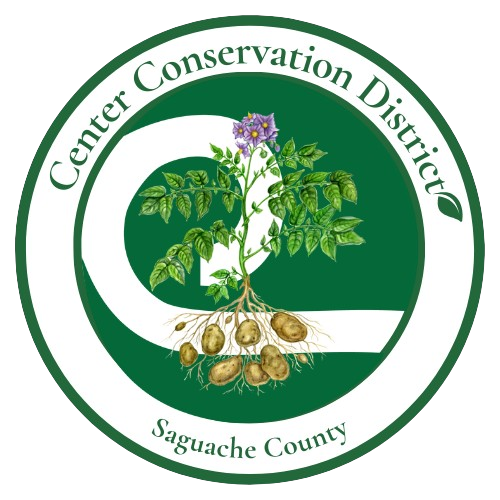Adams State University Mini-Pivot Project
Project Purpose
The Center & Rio Grande Conservation Districts are partnering with agribusiness, biology, and environmental science students from Adams State University to conduct drought-resiliency crop trials on the Districts' shared 6-acre mini-pivot starting in 2024. Students are responsible for designing the project; conducting all related tasks (soil tests, fieldwork, irrigation, etc.); collecting and understanding data (soil test levels, soil moisture, crop quality, yield, irrigation amounts, weather patterns, etc.); and preparing presentations to present their findings to local organizations, government officials, and producers.
The Center & Rio Grande Conservation Districts are excited about the opportunity of this partnership with Adams State University and encouraging students to find probable solutions to the drought problems that the San Luis Valley is currently facing. The goal of this project is for students to develop a feasible production plan that limits water usage without drastically affecting crop quality and quantity. A focus on soil health will be studied and how increasing soil health relates to reducing irrigation amounts. The production plan must be economically, environmentally, and operationally feasible for local producers, making it possible for producers to replicate the students' project in their operations.
Current Project Outline
Year 1 - 2024 Season
The students are focused on reviving the soil on the mini-pivot during the first year. Since the field has been fallowed since 2021, the students will conduct a soil test to determine the current state of the soil's health. Once this is determined, the students will officially launch the drought-resiliency crop trials with a cover crop mix of 30% peas and 70% oats. Herbicide may be applied as determined necessary. During planting, part of the field will introduce wool pellets to determine the effectiveness they have as a water-retaining fertilizer. The crop will be harvested for hay and possibly lightly grazed in the fall/winter.
A weather station and soil moisture probes will be installed at the mini-pivot site to ensure accurate information for students.
Year 2 - 2025 Season
In partnership with the Rye Resurgence project, the students will be planting winter rye at the end of Year 1 to grow for the 2025 season. Through the Rye Resurgence project, producers are encouraged to grow winter rye that can be used as green manure, grazing, or sold for distilling. If a producer chooses to sell the rye, the Rye Resurgence project is committed to paying the producer $0.40/lb for any variety of rye. The students have not yet decided what to do with the rye crop, but they have shown interest in learning more about the marketing and supply chain component that the Rye Resurgence project offers.
The rye will be planted using a no-till drill from 7L Diamond Ranch (Pete & Leah Clark). If available, the students may try adding wool pellets again on half of the field to test it on a different crop. The students may also test different water rates on the rye this year or in subsequent years to determine the least amount that can be applied before drastically affecting crop quality and yield.
Year 3 - 2026 Season
While the students have different ideas for this season, the official plan is to be determined. Here are some options that the students are considering:
- Planting various vegetables to test water-usage levels
- Testing volunteer rye regrowth with an additional planting of rye
- Attempt to certify the field as organic for potato trials
Project Partners
Without our partners, this project would not be possible. While the Center & Rio Grande Conservation Districts are managing and administering the project, we are not the only entities involved. Here is a list of our partners for this project:

Adams State University - providing this opportunity to its students through the USDA NextGen grant for time and mileage reimbursement

Colorado Water Conservation Board - the Rio Grande Conservation District received funding from the Colorado Water Conservation Board's Water Plan Grant to fund supplies and administration for this project
